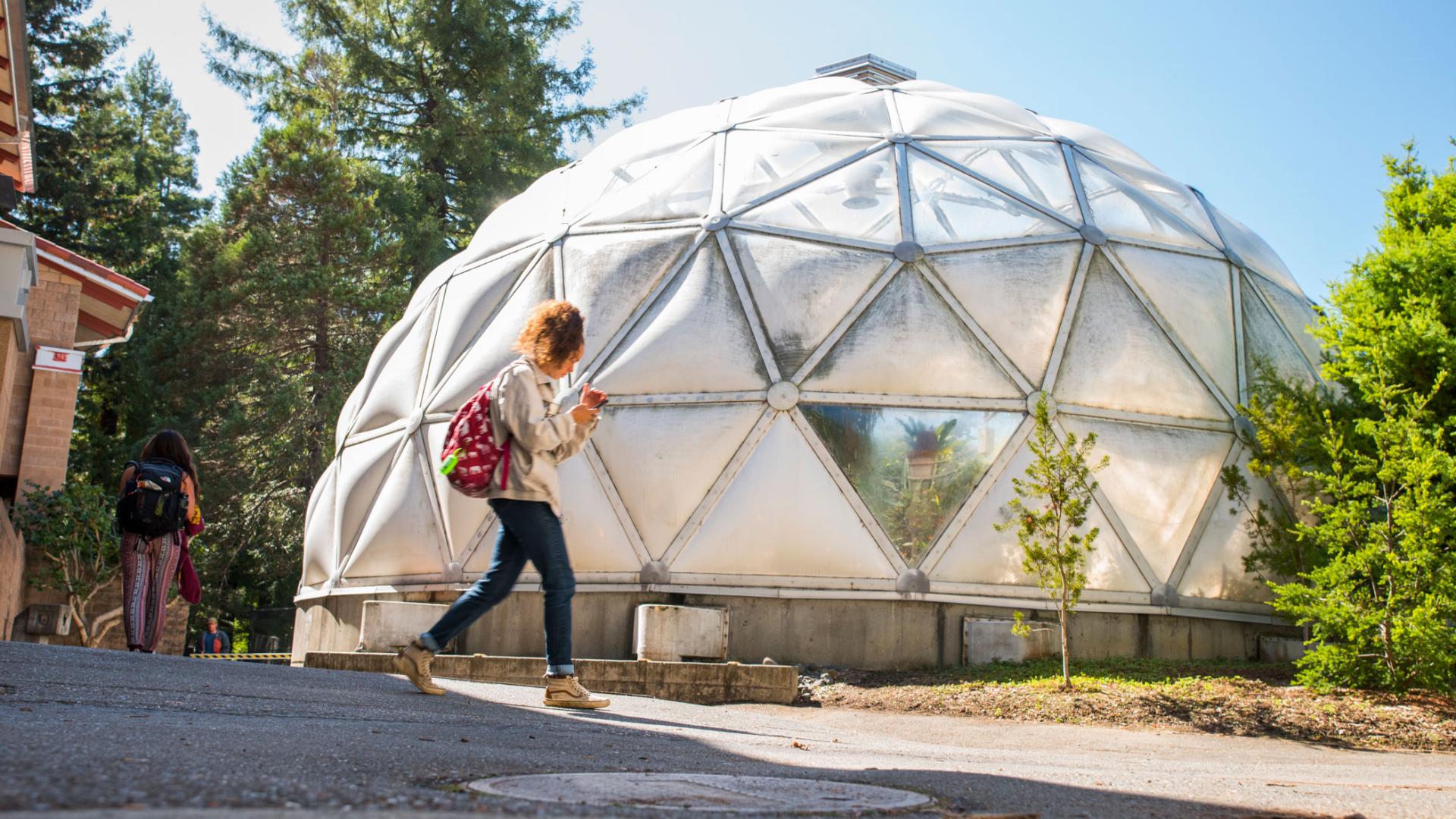Brian Hudgens
Breadcrumb
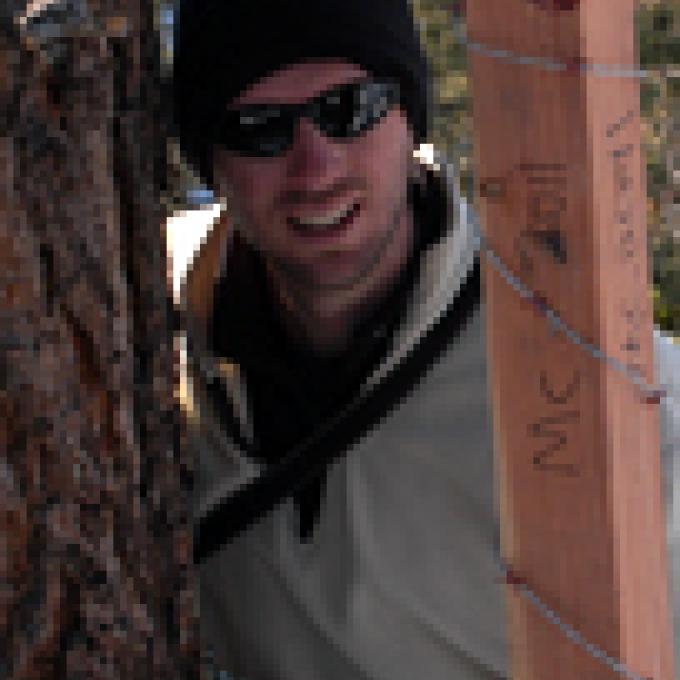
Brian Hudgens
Adjunct Professor
Alan Franklin
Breadcrumb
Alan Franklin
Adjunct Professor
William "Tim" Bean
Breadcrumb

Contact
wtbean@calpoly.eduWilliam "Tim" Bean
Adjunct Professor
- Ph.D. Environmental Science, Policy & Management, UC Berkeley, 2012
- B.A. Ecology, Evolution & Environmental Biology, Columbia University, 2004
WLDF 210 - Introduction to Wildlife Conservation and Administration
WLDF 301 - Principles of Wildlife Management
WLDF 431 - Upland Habitat Ecology
WLDF 468 - Spatial Analysis for Wildlife Ecology
WLDF 531 - Advanced Spatial Ecology
Although wildlife management has evolved dramatically in the 80 years since the University of Wisconsin first hired Aldo Leopold, we are still, at root, interested in three basic questions he posed: what have we done to the land, what are we doing now, and what are the consequences of those actions in the future? My research combines time-honored field methods with novel modeling and experimental techniques to address each of those questions, focusing in particular on the disciplines of population, habitat, movement and historical ecology.
I am particularly interested in species distributions across spatial scales. Maxent and other statistical techniques have been developed to understand species’ Hutchinsonian and Grinellian niches. What those models really mean, whether they’re applicable at finer spatial or temporal scales, how they project into the future and past, what they say about population and community ecology, and whether climatic variables are the most meaningful limits to species ranges are all open questions that require careful study. While I am thrilled by the possibilities of using freely available spatial data to develop complex spatial models, my research focuses on the natural history and ecology of the species to better inform these modeling exercises.
Giant Kangaroo Rats
The giant kangaroo rat (Dipodomys ingens) is a state- and federally-listed endangered rodent found in the western San Joaquin Valley and adjacent Coast Range. The species is limited to a narrow band of mean annual precipitation of approximately 7”-12”, and to flat or gentle slopes with loamy soil. Although precipitation is low it is also highly variable: in recent drought years, rainfall has been almost non-existent. In wetter El Nino years the area can receive up to 20”. This precipitation dynamic presents interesting and unique opportunities to study a population (and community) in a highly variable resource setting.
The recovery plan for giant kangaroo rats has clear, achievable goals. Our work incorporates range-wide surveys as well as a more intensive focus on the Ciervo-Panoche population, where approximately half of the remaining habitat is on private lands and some is slated for solar power development. Key questions about this population remain, including a better understanding of metapopulation dynamics and local adaptation to climate change (and the ability of niche models to tease that apart). My current funding includes opportunities for genomic studies in collaboration with the Sacks lab at UC-Davis and work on range-wide population dynamics and survey design.
White-footed voles
White-footed voles (Arborimus albipes) are one of the least studied small mammals in the United States. They are either very rare or very hard to catch. Occupying coastal habitat in northern California and Oregon, this species is semi-arboreal and apparently closely tied to stands of red alder. Little is known about the ecology of this species, and we are actively working on improving detection techniques and establishing baseline demographic data in a population in northern Humboldt County. Ongoing work includes intensive live-trapping in an old-growth coastal conifer stand and extensive trapping throughout coastal northwestern California in Mendocino, Humboldt and Del Norte Counties.
North American porcupines
In contrast to the habitat specialists above, North American porcupines are an incredible example of a generalist herbivore. Found throughout the continent, from New England to Alaska and south into Mexico, porcupines offer an exciting opportunity through collaboration or meta-analysis to understand range limits in a generalist species. In the summer of 2015, we initiated a radio- and GPS-collar study of a robust population in Tolowa Dunes State Park. Very little is known about the natural history of this species in a dune forest community, and even less is understood about the species in California. Recent work in the southern Sierras and northwest California has suggested a decline but without a single clear cause. Depending on funding, future work could include a better understanding of movement, parentage, dispersal, diet and energetics within the Tolowa population or more extensive surveys throughout the region to understand limiting factors, demographics, and threats to the population.
Novel technological solutions
The past decade has seen an incredible explosion of new technologies and cost decreases in existing ones. GPS collars, now costing $2-$3k, can be hacked using consumer-level equipment for $200-$300. Unmanned aerial vehicles can provide three-dimensional imagery at incredibly fine spatial and temporal scales. We currently are focusing on the use of “drones” to monitor waterbird populations and to develop a rapid response system in the event of an oil spill. Ecology is about to experience an observational revolution on par with the astronomical revolution 500 years ago. Inexpensive, novel sensors combined with open access data will provide us with a flood of information. We are incorporating these approaches in the systems above, but understanding best practices for collecting and analyzing this data is a field unto itself.
Ho Yi Wan
Breadcrumb
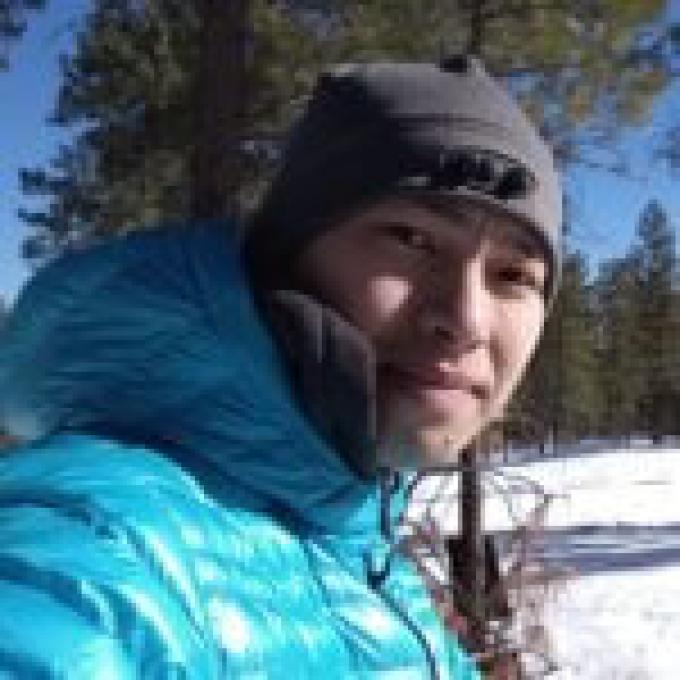
Ho Yi Wan
Associate Professor
Micaela Szykman Gunther
Breadcrumb

Micaela Szykman Gunther
Professor
*Graduate Faculty
Areas of Interest
Research interests focus on the behavioral ecology of mammals. Her work is primarily based on field studies and uses naturally occurring variation in wild populations to address testable alternative evolutionary hypotheses in behavioral ecology.
- Postdoctoral Research Fellowship, Smithsonian’s National Zoological Park, Conservation and Research Center, Department of Reproductive Sciences. 2002-2005.
- Joint Ph.D. in Zoology and Ecology, Evolutionary Biology, and Behavior, Michigan State University, East Lansing, Michigan. December 2001
- B.A. in Biology, Amherst College, Amherst, Massachusetts. May 1993.
Science 100 - Becoming a Scientist in the 21st Century
Wildlife 111 - Introduction to Wildlife
Wildlife 311 - Wildlife Techniques and Scientific Method
Wildlife 422 - Management of Mammal Populations
Wildlife 475 - Wildlife Ethology
Wildlife 485 - Seminar in Wildlife Management
Wildlife 490 - Honors Thesis
Wildlife 495 - Senior Project
Wildlife 580 - Behavioral Ecology
Wildlife 585 - Graduate Seminar in Wildlife Management
I am generally interested in the behavior of social mammals, with special interest in social carnivores. Since starting at Humboldt in 2006, my students and I have conducted field research projects on African wild dogs, North American river otters, Pacific fisher, Humboldt marten, Roosevelt elk, black-tailed deer, beavers, gray wolves, Mexican wolves, black bears, and mountain lions, among other various species observed during the course of undergraduate students’ honors projects (spotted hyenas, raccoons, cranes and other birds, bats, turtles and lizards, just to name a few).
My work is primarily based on field studies and uses naturally occurring variation in wild populations to address testable alternative evolutionary hypotheses in behavioral ecology. Much of my current work with carnivores includes the use of non-invasive methods and indirect observations such as the use of remote cameras, scat sampling, and tracking.
Recently, my graduate students have completed a variety of local projects. Several students have conducted complementary studies on North American river otters around Humboldt Bay, investigating various aspects of river otter ecology, including 1) using genetic markers to determine population number, structure and movements, 2) elucidating the relationship between stress hormone levels and water quality, 3) evaluating diet as a function of food availability, and 4) elucidating habitat selection and use. Several additional students are working on projects involving the mid-sized forest carnivores, fisher and marten. Areas of research include extent of home range overlap and den attendance in Pacific fisher, use of rest boxes and habitat selection by the federally threatened Humboldt marten, and diet of these and other carnivore species. Finally, several students have completed projects looking at Roosevelt elk population management in collaboration with partners at the California Department of Fish and Wildlife.
A Commitment to Diversity, Equity, and Inclusion
The Gunther lab is a healthy and safe environment committed to maintaining and promoting a diverse, inclusive, and collaborative work environment where members are empowered to freely and openly share their different views, ideas, and experiences. We welcome, support, and provide equal opportunities to undergraduate and graduate students from different socioeconomic backgrounds, races and ethnicities, citizenship or immigration status, gender identities and sexualities, religions, disabilities, familial obligations, and other personal identities. Our goal is to foster experiences that teach values and tools that last a lifetime and lay a strong foundation for future careers in wildlife management and conservation.
We acknowledge that the land on which we sit is Wiyot ancestral land, and much of our lives and work are conducted in the unceded territory and traditional ancestral homeland of several Indigenous nations including the Hupa, Karuk, Mattole, Tolowa, Wailaki, Wiyot, Yurok, and other original inhabitants of Humboldt County. We respect and share our gratitude to these Indigenous communities. We thank, honor, and learn from the original caretakers of this land that continues to be cherished and protected. We are grateful for our collaborations with tribal partners, including biologists from Yurok, Wiyot, Hupa, Toluwa, and the Blue Lake Rancheria current and ancestral lands who work closely with our students on various projects.
Prospective Graduate Students
If you are interested in pursuing studies generally pertaining to the behavioral ecology of (social) mammals under my supervision, you may get in touch with me via email. With your inquiry, be sure to include: 1) a cover letter including information on your long-term career goals, details of your past research (particularly field-based) experiences, and why you want to attend graduate school and join this research lab; 2) a recent cv/resume; and 3) relevant university transcripts (unofficial are fine). I may later request that you submit a 2-3 page proposal of a possible research topic that you would be interested to pursue if admitted to work with me here at Humboldt. To see the theses that have been completed by graduate students in my research lab and our Wildlife program in general, you may visit Humboldt Digital Scholar or Humboldt Digital Commons on the Humboldt website or click the thesis titles below.
To learn about the university application process for graduate studies in Wildlife visit the CNRS Graduate Studies website.
Be sure to view the graduate students' web site!
David Sinn
Breadcrumb

David Sinn
Lecturer
- Ph.D. in Ecology, University of Tasmania, Hobart, Tasmania (2006)
- M.Sc. in Comparative Psychology, Portland State University, Portland, Oregon (2000)
- B.Sc. in Marine Biology, Texas A & M at Galveston, Galveston, Texas (1994)
WLDF 210 Intro to Wldlfe Conserv & Admn
WLDF 309 Environmental Ethics
WLDF 485 Senior Seminar Wildlife Mgmt
WLDF 495 Senior Project
I am currently pursuing several research projects, all with a focus on incorporating diverse, unique, passionate, critically-thinking undergraduate and graduate students:
1) Reintroduction of California sunflower starfish (Pycnopodia helianthoides) into local waters. Disease and climate change have devastated this endangered species along our California coast. This research aims to establish Cal Poly Humboldt as a key partner in the culturing, preservation, and reintroduction of this keystone predator into West coast waters.
2) The impacts of e-waste on wildlife in Ghana. Along with collaborators at the University of Ghana, this work attempts to document the impacts on wildlife of the illegal e-waste trade on fish populations in Agbogbloshie, Ghana.
Previous Research
All of my past research endeavors, at some level, are based on the idea of individual heterogeneity.
Past fundamental research
Some of my past research has demonstrated that personality traits related to growth (e.g., boldness) may be governed by condition-dependent developmental processes that promote phenotypes based on current and recent historical environmental conditions (Sinn, et al. 2008; Fratkin, et al. 2013; van Oers & Sinn 2013). This is in contrast to other traits related to social skills (e.g., conspecific aggression), that appear to be more heavily influenced by genotype-dependent processes (Sinn et al. 2001; van Oers & Sinn 2010; Sinn, et al. 2006). I have also studied how phenotypic plasticity can covary with evolutionary fitness (Fratkin et al. 2013; Sinn et al. 2006; Sinn et al. 2008; Sinn et al. 2010). Theoretically, specifying modes of development for personality in predictive models could significantly alter the rate at which populations respond to disturbance (such as human conflict or habitat loss in animals), but the extent of these effects is currently unknown.
Past applied research
My work with orphaned Tasmanian devils was able to show that exploratory behavior was a strong predictor of translocation success (Sinn et al., 2014); translocation is now a major component of the management ‘tool box’ currently being used by the Save the Tasmanian devil program to combat devil facial tumour disease. My work with odor-detection dogs was designed to help optimize a US detection dog breeding and development center, based on the observation that working dogs have personalities too that determine a dogs’ work performance (Sinn, et al. 2010; Wilsson & Sinn, 2013; McGarrity et al. 2015). For working dogs, one of the critical aspects of current research is identifying behavior relevant to working-life conditions, and figuring out how to measure it well. My past working dog research has shown that when watching the same dog, people may not agree strongly in terms of what the dog is doing (McGarrity et al. 2015; Fratkin et al. 2015). Experts in the field tend to be very good at generally picking puppies that end up being good working dogs as adults (Sinn et al. 2010; Wilsson & Sinn 2013; McGarrity et al. 2015), but the field as yet has been unable to derive reliable quantitative measures of behavior that predict adult behavior based on observations during puppyhood (Fratkin et al. 2013).
Understanding mechanisms of disease transmission in humans and other animals is challenging, and few demonstrations exist of how social contact networks relate to observed disease spread; this is especially the case for parasites like ticks, where infestation occurs when different individuals share the same space (but with a time-lag, because the tick needs to molt or the female needs to hatch her larvae). As part of a larger long-term study, my most recent research has included leading a team of undergraduates and graduate students in an attempt to catch and study all adult lizards in a single study population located in South Australia. We have been documenting lizard space use, social interactions, and movement, and along with measures of size, habitat resources, aggression and boldness, foraging, overnight refuge use, and regular tick counts in order to predict tick transmission. In addition, we added genetically-unique tick larvae to our study population and then collected later life stages. Our field site is part of a larger 32-year long lizard/tick survey. Our work on this system is just now starting to come out in publication.
Kelly Robinson
Breadcrumb
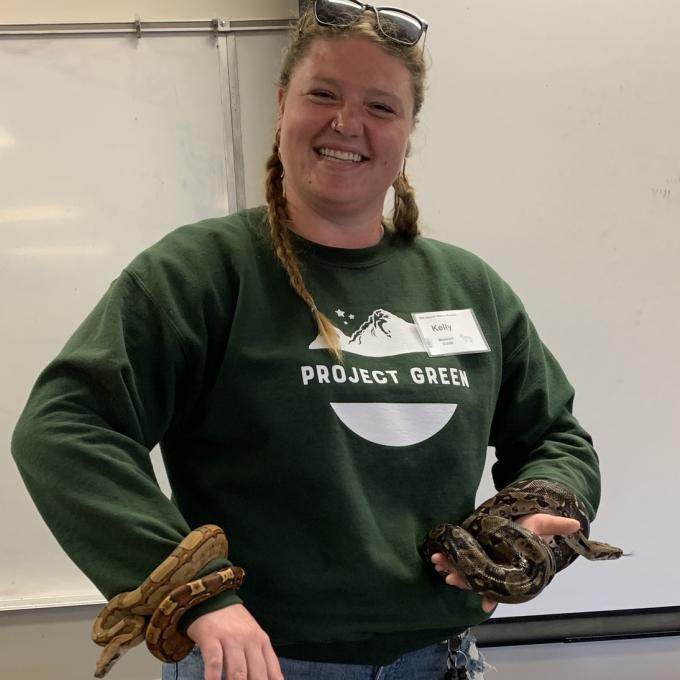
Kelly Robinson
Lecturer
WLDF 210 Intro to Wldlfe Conserv & Admn, WLDF 460 Conservation Biology, WLDF 495W Senior Project, WLDF 585 Seminar in Wildlife Management
Matthew Johnson
Breadcrumb

Matthew Johnson
Professor
*Graduate Faculty
- Ph.D. Ecology, Tulane University, 1999
- B.S. Wildlife Biology, UC Davis, 1992
- SCI 100 - Becoming a STEM professional in the 21st century
- WLDF 309 - Case Studies in Environmental Ethics
- WLDF 311 - Wildlife Techniques & Scientific Method
- WLDF 365 - Ornithology
- WLDF 431 - Upland Habitat Ecology
- WLDF 531 - Advanced Habitat Ecology
- WLDF 585 - Graduate Seminar
Frank Fogarty
Breadcrumb
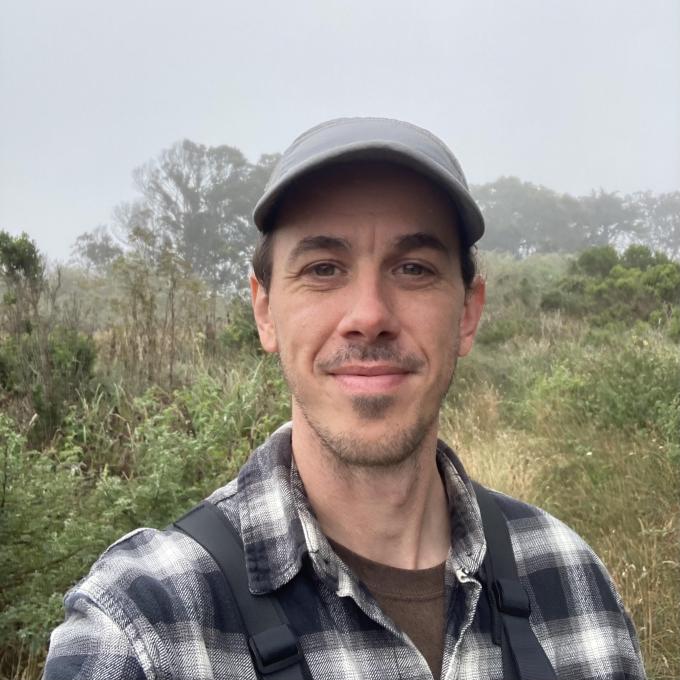
Frank Fogarty
Assistant Professor
*Graduate Faculty
- Ph.D. Ecology, University of California, Davis, 2020
- M.S. Sustainable Development and Conservation Biology, University of Maryland, College Park, 2013
- M.P.P. Public Policy, University of Maryland, College Park, 2013
- B.S. Zoology, University of Florida, 2009
WLDF 365 - Ornithology
WLDF 423 - Biology, conservation, and management of passerines
WLDF 485 - Senior Seminar
WLDF 495 - Senior Projects


